Saturday, May 06, 2006
Babies Today Are Still Dying from Chernobyl 20 Years Ago
I had to post this here so that more people understand what it means to have nuclear power plant operating near you. (by this I mean 200 miles (320KM) or less!) Imagine being a mother who has a baby dying from cancer, and you can not do anything. Many Iraqi mothers are now experiencing this from DU pollution, as are the mothers of Chernobyl children.
We have 55 nuclear power plants plus one new reprocessing plant in Japan. According to Greenpeace in one day Rokkasho Reprocessing plant discharges the same amount of radiation as a single nuclear power plant would discharge in one year. But some say it is more than that.
For example, Mr. Kiyohiko Yamada says that the discharge of radiation from Rokkasho alone IN ONE DAY is more than all the 55 nuclear power plants in Japan combined FOR A YEAR. What this means is that Rokkasho is releasing the equivalent amount of radiation that 20,075(55 by 365 days) nuke plants would release PER DAY. Mr. Yamada says that the radiation release data was made public through the Gennen's public hearing minutes, which he has access to (Gennen is the Japan Nuclear Fuel Company who operates the Rokkasho reprocessing plant). The "active test" of the reprocessing plant started on March 31.
This number sounds too high to be believable to me, so I am in the process of checking this data. I will will adjust these figures after I have confirmation of this data.
This is really crazy. Are the Japanese people (we) so stupid to allow this happen to their(our) land, water and air? All our assets, houses, apartments, company buildings and so on, will become worthless if a single accident happens. In case of the Rokkasho reprocessing plant, without even an accident, the pollution is released on a daily basis, as part of the regular operation of the plant, so the damage is ongoing and continous...
Who would want to invest in such a potentially dangerous place? Think about it. If we wanted to sell Japan in such a condition, who would buy it? We have no right to pollute our planet, our land, water and soil. They are for our children to enjoy. We must do something about this!
Yumi
Please read the letter below, from Michael Mariotte, the Executive Director of the Nuclear Information and Resource Service.
I hope you will forward it on to others around the world.
============
NUCLEAR INFORMATION AND RESOURCE SERVICE
6930 Carroll Avenue, Suite 340, Takoma Park, MD 20912
301-270-NIRS (301-270-6477); Fax: 301-270-4291
www.nirs.org
May 4, 2006
Dear Friend of NIRS,
I’m sitting today in our office in Rivne, Ukraine, where we’re working on the next steps to build upon last week’s remarkable Chornobyl+20: Remembrance for the Future conference in Kyiv, Ukraine.
I’m almost 200 miles west of Chornobyl, yet just 30 miles to the north is one of Ukraine’s four levels of contaminated zones. In this zone, tens of thousands of people live and work and farm and eat food grown on land that is killing them. More than four million people in Ukraine, Belarus and Russia still live on land contaminated from the Chornobyl accident of 20 years ago. Sadly, babies born today are still dying from that accident because they’re drinking milk produced by cows eating contaminated grass. Chornobyl truly is an accident without end.
If your information came only from the American media, or the nuclear power industry, you would probably think Chornobyl really wasn’t so bad. A disaster, yes, but a manageable one; one the world can live with if necessary to produce needed electricity.
Sitting here in Ukraine, with new studies about the real consequences of Chornobyl stacked next to my desk, the reality looks quite different.
Last September, the International Atomic Energy Agency (IAEA) and World Health Organization (WHO) released a report on Chornobyl’s consequences, which concluded that while the accident had resulted in hundreds of billions of dollars in damages and permanent interdiction of large areas of land, “only” about 4,000 cancer fatalities were expected. Perhaps only the cynical nuclear power industry could consider a disaster whose consequences are greater than Hurricane Katrina to be good news, but the industry seized upon this study to argue that the world should be building more nuclear reactors.
But in the past few weeks, several new studies have been released countering the IAEA’s report. First came the TORCH report, prepared for the Chornobyl+20 conference. It concluded that 30,000-60,000 cancer fatalities can be expected. A report prepared for Greenpeace and endorsed by more than 50 scientists from the affected countries projects 93,000 deaths, and perhaps as many as 200,000. Other studies project even higher casualties.
And these reports were big news across Europe. Finally, even the World Health Organization (which by a 1950s-era agreement is forced to accept IAEA statistics on nuclear-related health effects) could no longer accept the IAEA’s numbers, and on April 20 released a document projecting a still-very-conservative 29,000 deaths (although you had to read the fine print to find that number).
In short, the IAEA has been largely discredited; its September report found to be self-serving. The real consequences, and thus lessons of Chornobyl, are much greater and more profound than the IAEA and nuclear industries of the world want to admit.
Across Ukraine, across Europe, this is generally understood. But the U.S. media has by and large ignored the reality of Chornobyl and its implications.
That’s easy to do in the U.S., it’s much harder to ignore here in Ukraine. In a couple of weeks, I’ll be coming home. I can leave and not worry about the ongoing consequences. The people who live here cannot.
And yet we all—in every country—ignore the devastation of Chornobyl at our own peril. Because Chornobyl can happen anywhere there is nuclear power and, unless its lessons are learned, it will happen again.
The studies I referred to, and more, are available on our website at http://www.nirs.org/c20/c20us.htm, along with the resolution from the conference and a lot more.
In coming weeks, we’ll be adding proceedings from the conference and updating and expanding our sections on nuclear power and climate change and on sustainable energy, so that you’ll continue to have access to the best and latest information on the issues important to us all. And we’ll be working to spread the truth about Chornobyl, and nuclear issues generally, to the media across the U.S.
You’ll also be hearing from us about the latest congressional activity on Yucca Mountain and reprocessing and how your actions can make a difference in our energy future.
That all takes resources, of course, and I hope you’ll take a moment now to help by donating to us at https://secure.campagne-online.com/registrant/donate.aspx?EventID=2927&LangPref=en-CA. This is our secure online credit card processing system. You can also access this site directly from the NIRS home page at http://www.nirs.org.
As an added incentive, if you contribute by June 30, your contribution will be matched, dollar-for-dollar, by a matching grant set up as a tribute to NIRS’ Radioactive Waste Project director Diane D’Arrigo, who is celebrating her 20th year at NIRS.
If you’d prefer to donate by check, please send your contribution to NIRS, 6930 Carroll Avenue, Suite 340, Takoma Park, MD 20912. Or you can contribute by credit card over the phone at NIRS, 301-270-6477.
However you choose to contribute, I hope you will do so as generously as you can. We must ensure that there will be no more Chornobyls—not in Ukraine, and not in the U.S.
Thank you for your help and support.
Michael Mariotte
Executive Director
Nuclear Information and Resource Service
nirsnet@nirs.org
We have 55 nuclear power plants plus one new reprocessing plant in Japan. According to Greenpeace in one day Rokkasho Reprocessing plant discharges the same amount of radiation as a single nuclear power plant would discharge in one year. But some say it is more than that.
For example, Mr. Kiyohiko Yamada says that the discharge of radiation from Rokkasho alone IN ONE DAY is more than all the 55 nuclear power plants in Japan combined FOR A YEAR. What this means is that Rokkasho is releasing the equivalent amount of radiation that 20,075(55 by 365 days) nuke plants would release PER DAY. Mr. Yamada says that the radiation release data was made public through the Gennen's public hearing minutes, which he has access to (Gennen is the Japan Nuclear Fuel Company who operates the Rokkasho reprocessing plant). The "active test" of the reprocessing plant started on March 31.
This number sounds too high to be believable to me, so I am in the process of checking this data. I will will adjust these figures after I have confirmation of this data.
This is really crazy. Are the Japanese people (we) so stupid to allow this happen to their(our) land, water and air? All our assets, houses, apartments, company buildings and so on, will become worthless if a single accident happens. In case of the Rokkasho reprocessing plant, without even an accident, the pollution is released on a daily basis, as part of the regular operation of the plant, so the damage is ongoing and continous...
Who would want to invest in such a potentially dangerous place? Think about it. If we wanted to sell Japan in such a condition, who would buy it? We have no right to pollute our planet, our land, water and soil. They are for our children to enjoy. We must do something about this!
Yumi
Please read the letter below, from Michael Mariotte, the Executive Director of the Nuclear Information and Resource Service.
I hope you will forward it on to others around the world.
============
NUCLEAR INFORMATION AND RESOURCE SERVICE
6930 Carroll Avenue, Suite 340, Takoma Park, MD 20912
301-270-NIRS (301-270-6477); Fax: 301-270-4291
www.nirs.org
May 4, 2006
Dear Friend of NIRS,
I’m sitting today in our office in Rivne, Ukraine, where we’re working on the next steps to build upon last week’s remarkable Chornobyl+20: Remembrance for the Future conference in Kyiv, Ukraine.
I’m almost 200 miles west of Chornobyl, yet just 30 miles to the north is one of Ukraine’s four levels of contaminated zones. In this zone, tens of thousands of people live and work and farm and eat food grown on land that is killing them. More than four million people in Ukraine, Belarus and Russia still live on land contaminated from the Chornobyl accident of 20 years ago. Sadly, babies born today are still dying from that accident because they’re drinking milk produced by cows eating contaminated grass. Chornobyl truly is an accident without end.
If your information came only from the American media, or the nuclear power industry, you would probably think Chornobyl really wasn’t so bad. A disaster, yes, but a manageable one; one the world can live with if necessary to produce needed electricity.
Sitting here in Ukraine, with new studies about the real consequences of Chornobyl stacked next to my desk, the reality looks quite different.
Last September, the International Atomic Energy Agency (IAEA) and World Health Organization (WHO) released a report on Chornobyl’s consequences, which concluded that while the accident had resulted in hundreds of billions of dollars in damages and permanent interdiction of large areas of land, “only” about 4,000 cancer fatalities were expected. Perhaps only the cynical nuclear power industry could consider a disaster whose consequences are greater than Hurricane Katrina to be good news, but the industry seized upon this study to argue that the world should be building more nuclear reactors.
But in the past few weeks, several new studies have been released countering the IAEA’s report. First came the TORCH report, prepared for the Chornobyl+20 conference. It concluded that 30,000-60,000 cancer fatalities can be expected. A report prepared for Greenpeace and endorsed by more than 50 scientists from the affected countries projects 93,000 deaths, and perhaps as many as 200,000. Other studies project even higher casualties.
And these reports were big news across Europe. Finally, even the World Health Organization (which by a 1950s-era agreement is forced to accept IAEA statistics on nuclear-related health effects) could no longer accept the IAEA’s numbers, and on April 20 released a document projecting a still-very-conservative 29,000 deaths (although you had to read the fine print to find that number).
In short, the IAEA has been largely discredited; its September report found to be self-serving. The real consequences, and thus lessons of Chornobyl, are much greater and more profound than the IAEA and nuclear industries of the world want to admit.
Across Ukraine, across Europe, this is generally understood. But the U.S. media has by and large ignored the reality of Chornobyl and its implications.
That’s easy to do in the U.S., it’s much harder to ignore here in Ukraine. In a couple of weeks, I’ll be coming home. I can leave and not worry about the ongoing consequences. The people who live here cannot.
And yet we all—in every country—ignore the devastation of Chornobyl at our own peril. Because Chornobyl can happen anywhere there is nuclear power and, unless its lessons are learned, it will happen again.
The studies I referred to, and more, are available on our website at http://www.nirs.org/c20/c20us.htm, along with the resolution from the conference and a lot more.
In coming weeks, we’ll be adding proceedings from the conference and updating and expanding our sections on nuclear power and climate change and on sustainable energy, so that you’ll continue to have access to the best and latest information on the issues important to us all. And we’ll be working to spread the truth about Chornobyl, and nuclear issues generally, to the media across the U.S.
You’ll also be hearing from us about the latest congressional activity on Yucca Mountain and reprocessing and how your actions can make a difference in our energy future.
That all takes resources, of course, and I hope you’ll take a moment now to help by donating to us at https://secure.campagne-online.com/registrant/donate.aspx?EventID=2927&LangPref=en-CA. This is our secure online credit card processing system. You can also access this site directly from the NIRS home page at http://www.nirs.org.
As an added incentive, if you contribute by June 30, your contribution will be matched, dollar-for-dollar, by a matching grant set up as a tribute to NIRS’ Radioactive Waste Project director Diane D’Arrigo, who is celebrating her 20th year at NIRS.
If you’d prefer to donate by check, please send your contribution to NIRS, 6930 Carroll Avenue, Suite 340, Takoma Park, MD 20912. Or you can contribute by credit card over the phone at NIRS, 301-270-6477.
However you choose to contribute, I hope you will do so as generously as you can. We must ensure that there will be no more Chornobyls—not in Ukraine, and not in the U.S.
Thank you for your help and support.
Michael Mariotte
Executive Director
Nuclear Information and Resource Service
nirsnet@nirs.org
Subscribe to:
Post Comments (Atom)

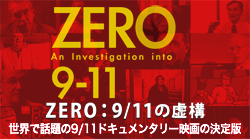

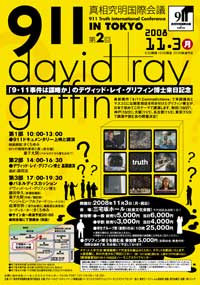

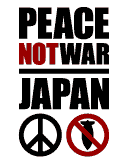







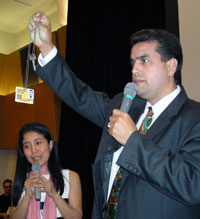
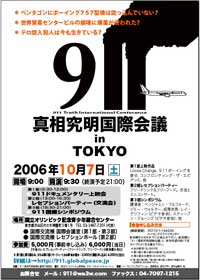




No comments:
Post a Comment